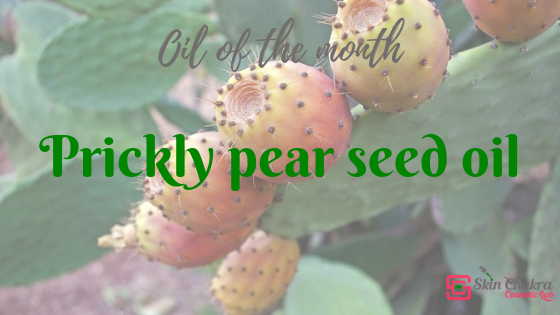Prickly pear seed oil is our oil of the month in October 2019. This means, through the whole month of October we have a special discount for this oil.
Read about our previous oils of the month if you have missed the blog posts:
Watermelon seed oil
Plum kernel oil
Elderberry oil
Arnica flower oil
Passionfruit seed oil
Brazil nut oil
Avocado oil
Sacha-Inchi oil
Cucumber oil
Moringa oil
Rosehip oil
The plant
Cactus originates from Mexico and was introduced to other parts of the world from there. Over 1500 species are now found in Europe, Mediterranean countries, southwest US, northern Mexico and Africa.
Cactus grows in dry and semi dry areas where no other plants survive. Opunita ficus indica and opunita dillenii are two sorts with edible fruit and with an enormous commercial potential for applications in food and beverages, pharmaceuticals, nutriceuticals and cosmetics.
In this blog, we only discuss about the oil of opunita ficus indica which is known as the prickly pear or cactus pear.
The oil
Oil is obtained both from the seeds and from the fruit with slightly different compositions. In this post, we only cover the seed oil.
INCI: OPUNTIA FICUS-INDICA SEED OIL
CAS # 90082-21-6
EC # 290-109-1
Iodine value: 100-129 g I2/100 gr
Saponification value: 165-200 mg KOH/gr
The oil has a decent yellow colour and a nice and decent nutty scent (like roasted nuts). I have heard from some people complain about the stench of the oil (not from us) but I assume they have been using adultrated or rancid oil.
Cactus pear seed oil has quite an extraordinary oil profile. It is one of the few liquid oils with a relatively low content of oleic acid. Its main component is the linoleic acid and it has a medium content of palmitic acid (a constituent of our skin barrier).

The exciting fact about this oil is not its fatty acid spectrum however. The unrefined oil has quite a high content of phytosterols (an amazing content of 15000 ppm) with beta-sitosterol being the main component.

Tocopherol content is about 500 ppm with gamma-tocopherol being the main component

In addition to all these excellent unsaponifiables, the oil has a content of about 47 ppm beta-carotene.
Storage and handling:
The oil has a high iodine value. Although the high content of gamma-tocopherol and beta-carotene protect the oil against oxidation, it is still a very sensitive oil.
Store the oil in small bottle and protected from light and heat. Reduce the headspace by refilling the oil in smaller bottles as you consume the content.
Do not heat this oil. Us it during the cool down phase.
Application:
I wouldn't use this precious (which has a relatively high price) oil in rinse-off products. Use it in high performance serums, masks, anti-aging and revitalizing products as well as in leave-on hair care products.
Further readings and references:
Ramadan, Mohamed Fawzy, and Jörg-Thomas Mörsel. "Oil cactus pear (Opuntia ficus-indica L.)." Food chemistry 82.3 (2003): 339-345.
Ghazi, Z., et al. "Fatty acids sterols and vitamin e composition of seed oil of Opuntia ficus indica and Opuntia dillenii from morocco." Journal of Materials and Environmental Science 5.6 (2013): 967-972.
Krist, Sabine, Gerhard Buchbauer, and Carina Klausberger. Lexikon der pflanzlichen Fette und Öle. Springer-Verlag, 2009.
BeHappy and have fun





